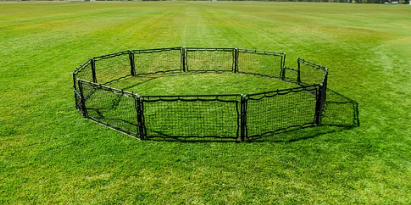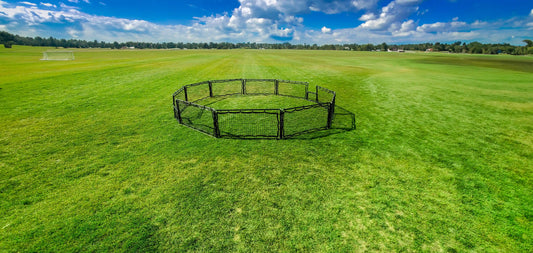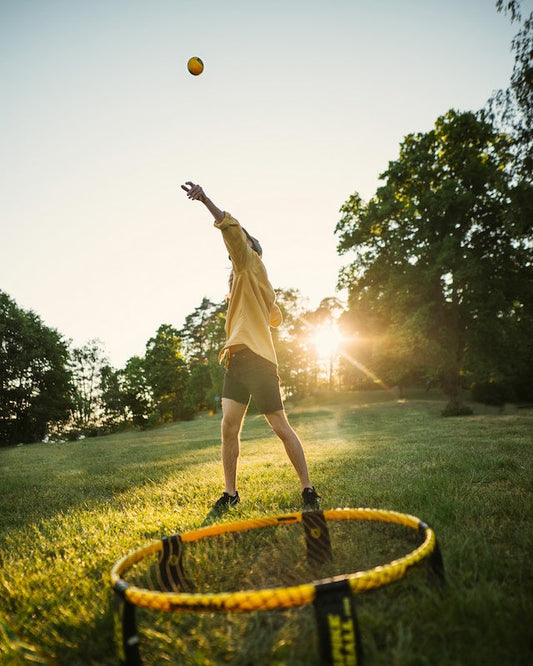An icebreaker, in the context of social interactions, is a term used to describe a technique, activity, or conversation starter that is employed to break down initial social barriers and create a comfortable and engaging atmosphere among people who may not know each other well or have just met. The primary goal of an icebreaker is to encourage interaction, open communication, and build rapport between individuals or groups, especially in unfamiliar or potentially awkward situations.
The term "icebreaker" originates from the practice of breaking up ice to allow ships to navigate through frozen waters. Similarly, in social settings, an icebreaker serves as a tool to break through the initial awkwardness and hesitancy that can arise when people meet for the first time or when a group gathers.
Key characteristics and functions of icebreakers include:
- Promoting Interaction: Icebreakers encourage individuals to engage with each other by providing a shared activity or topic of conversation. This helps people become more comfortable and less hesitant to participate in group discussions.
- Creating a Positive Atmosphere: Icebreakers are designed to be light-hearted and fun, promoting a positive and friendly environment. This can help reduce tension and nervousness among participants.
- Building Relationships: By fostering interactions and encouraging people to share information about themselves, icebreakers help in the initial stages of building personal connections and relationships.
- Facilitating Communication: Icebreakers often involve communication exercises that enable individuals to practice active listening and effective communication skills.
- Developing Empathy and Understanding: Some icebreakers involve sharing personal experiences or stories, which can lead to greater empathy and understanding among participants.
- Breaking Down Cultural and Social Barriers: In diverse groups, icebreakers can be particularly useful in bridging cultural gaps and promoting inclusivity.
- Energizing the Group: Icebreakers inject energy and enthusiasm into a gathering, setting a positive tone for the rest of the interactions or activities that follow.
Below is a list of ice breaker games that help promote interaction.
- Speed Networking: This activity mimics the format of speed dating. Participants pair up and have a limited time (e.g., 1-2 minutes) to introduce themselves and share some basic information before switching partners. It encourages quick and efficient interactions and allows participants to meet many people in a short amount of time.
- Group Juggle: Participants form a circle and are given a soft object (e.g., a ball or beanbag). One person starts by saying their name and then throws the object to someone else while calling out their name. The person who catches it does the same, and the process continues until everyone has participated.

- Find a Commonality: Participants pair up and have a set amount of time to discover as many things they have in common as possible. Once the time is up, pairs share some of their common interests with the larger group.
- Memory Wall: Prepare a large sheet of paper or a whiteboard and ask participants to write down one interesting fact about themselves. Then, everyone walks around the room, reading each other's facts, and striking up conversations based on the shared information.
- One-Word Introduction: Each participant introduces themselves using only one word that describes their mood, favorite hobby, or anything else they'd like to share. After everyone has spoken, they can elaborate on why they chose that specific word.
- Photo Sharing: Ask participants to bring or share a photo from their mobile devices that holds significance or a story behind it. They take turns showing the photo to others and explaining the context.
- Collaborative Drawing: Divide participants into small groups and provide each group with a large piece of paper or a whiteboard. Instruct them to draw something related to a topic or theme relevant to the gathering or event. This activity encourages teamwork and sparks conversations among group members.
- Would You Rather: Prepare a list of light-hearted "Would You Rather" questions and have participants take turns answering them. After answering, they can discuss their choices and reasons with others in the group.
- Story Starters: Provide participants with a few sentence starters (e.g., "Once upon a time, there was a magical creature..."). Each person continues the story with a couple of sentences before passing it on to the next participant. The story can become humorous and creative as it progresses.
- Personal Object Show and Tell: Participants bring a personal item that has a story or meaning behind it. They take turns sharing the item and its significance with the group.
Below is a list of ice breaker games that help create a positive atmosphere.
- Emoji Introduction: Participants introduce themselves using only emojis. They can use a combination of emojis that represent their hobbies, interests, or personality traits. Everyone takes turns guessing what the emojis mean and getting to know each other.
- Compliment Circle: Participants form a circle, and each person takes a turn complimenting the person on their right. The compliments can be about anything positive, such as their smile, sense of humor, or creativity. This exercise helps build a positive and supportive environment.
- Positive Affirmations: Participants pair up and take turns giving each other positive affirmations. Each person shares something they appreciate or admire about their partner. This activity boosts confidence and creates a positive atmosphere of encouragement.
- Appreciation Cards: Provide participants with blank cards or sticky notes. Each person writes an appreciation message to someone else in the group. They can give these cards anonymously or hand them over personally, spreading positivity and gratitude.
- Team Charades: Divide participants into teams and have them play a friendly game of charades. The chosen words or phrases should be positive and inspiring to keep the atmosphere uplifting.
- Song Share: Participants take turns sharing a favorite song or a song that makes them feel happy. They can explain why they chose that song and what emotions it evokes.
- Humorous Icebreaker Questions: Prepare a list of funny and light-hearted icebreaker questions that participants can answer. Questions like "What's the silliest thing you've ever done?" or "If you could have any superpower, what would it be?" can create laughter and a positive vibe.
- Celebrity Match: Participants pair up and find three things they have in common with each other. Afterward, they introduce their partner to the rest of the group, highlighting their shared traits.
- Comedy Improv: Organize a short comedy improv session where participants create funny and positive skits on the spot. This activity encourages creativity and laughter.

- Gratitude Circle: Participants sit in a circle and take turns expressing something they are grateful for. It can be related to the event, the group, or something personal.
Below is a list of ice breaker games that help in building relationships.
- Life Timeline: Participants create a timeline of significant events and milestones in their lives, both personal and professional. They share their timelines with others, providing an opportunity to learn more about each other's journeys.
- Common Ground: Participants form pairs or small groups and discuss topics they are passionate about or find common interests. This helps in finding shared hobbies or experiences, strengthening the bond between individuals.
- Appreciative Interview: Participants pair up, and each person takes turns being the interviewer and interviewee. The interviewer asks questions about the interviewee's achievements, skills, and positive qualities, helping them feel valued and appreciated.
- Personal Symbols: Each participant brings an object or symbol that represents something meaningful to them. They explain the significance of their chosen symbol to the group, allowing others to gain insight into their values and experiences.
- Open-ended Questions: Instead of typical yes/no questions, encourage participants to ask open-ended questions that require more in-depth responses. This encourages more meaningful conversations and allows participants to learn more about each other.
- Strengths and Weaknesses: Participants share one of their strengths and one weakness with the group. This exercise fosters vulnerability and helps participants understand and support each other's personal growth.
- Group Scavenger Hunt: Organize a scavenger hunt with items or tasks that require participants to collaborate and work together. This activity builds teamwork and camaraderie among the participants.
- Bucket List Sharing: Participants share one item from their bucket list with the group and explain why it's important to them. This can lead to discussions about shared goals and aspirations.
- Relationship Maps: Participants draw relationship maps to visually represent their connections with other people in the room. This helps identify mutual connections and potential areas for collaboration.
- Empathy Building: Divide participants into pairs and have them share personal stories or experiences that have had a significant impact on their lives. The listening partner practices active listening and provides empathy and support.
Below is a list of ice breaker games that help facilitate communication.
- Group Storytelling: Participants sit in a circle, and one person starts a story with a single sentence. The story then continues around the circle, with each person adding a sentence to build on the narrative. This activity encourages active listening and collaboration.
- Pair Share: Participants pair up and take turns sharing a personal experience or a specific topic given by the facilitator. Each person has a set time to speak while the other actively listens without interruption. Afterward, they switch roles.
- Picture Description: Provide each participant with a unique image or photograph. They must describe the image to a partner without showing it, while the partner listens and tries to visualize the scene based on the description.
- Conversation Ball: Participants stand in a circle, and a soft ball is tossed between them. The person catching the ball must answer a question written on the ball or provided by the facilitator, then toss it to someone else to continue the conversation.
- Mirroring Exercise: Divide participants into pairs. One person shares their thoughts or feelings while the other actively mirrors and paraphrases what they say without judgment. Then, they switch roles.
- Silent Interviews: Participants walk around the room, partnering with someone they haven't interacted with yet. They communicate silently through gestures and facial expressions to learn about each other without using words.
- Listening Bingo: Create bingo cards with different listening-related tasks or behaviors (e.g., "Ask a follow-up question," "Maintain eye contact," "Nod in understanding"). Participants try to complete a row of tasks as they engage in conversations.
- Role Reversal: Participants pair up and choose a topic to discuss. After a few minutes, they switch roles, and the listener becomes the speaker while summarizing or reflecting on what they heard.
- Non-Verbal Communication Challenge: Divide participants into groups and give each group a scenario or problem to solve using only non-verbal communication. This encourages creativity and cooperation in finding alternative ways to convey information.
- Discussion Starters: Prepare a list of thought-provoking questions related to the event's theme or purpose. Participants can choose a question from the list and discuss it in small groups, encouraging open communication and diverse perspectives.
Below is a list of ice breaker games that help develop empathy and understanding.
- Empathy Walk: Participants pair up and take turns sharing a personal experience or a challenge they've faced. The listener then takes a short "empathy walk" where they try to imagine how the other person felt during that experience.
- Life Mapping: Each participant creates a life map that highlights significant events and experiences that have shaped them. They share their maps with a small group, allowing others to understand their unique life journey.
- Empathy Interviews: Participants pair up and conduct empathy interviews, where they take turns asking each other open-ended questions about their feelings, hopes, fears, and dreams. The goal is to foster deep understanding and compassion.
- In Their Shoes: Prepare a set of scenario cards describing different life situations or challenges. Participants draw a card, read the scenario, and discuss how they would feel and act if they were in that person's shoes.
- Cultural Exchange: In diverse groups, participants share aspects of their culture, traditions, or family background with others. This activity promotes cultural understanding and appreciation for each other's differences.
- Common Humanity: Participants gather in a circle, and one by one, they share a personal experience or feeling that highlights their common humanity, such as a time when they felt vulnerable or proud.
- Personal Artifacts: Each participant brings an object that holds emotional significance to them. They share the story behind the object and why it is meaningful in their life.
- Listenisng Circle: Participants sit in small groups, and one person shares a personal story while others actively listen without interrupting. Afterward, the listeners reflect on what they learned from the story and share their insights.
- Perspective Swap: Divide participants into groups and assign each group a different perspective to explore (e.g., a parent, a teacher, a healthcare worker). They discuss the challenges and emotions associated with that role to gain understanding and empathy.
- Empathy Skits: Participants work in pairs or small groups to create short skits portraying different scenarios involving empathy and understanding. The skits can be fictional or based on real-life situations.
Below is a list of ice breaker games that help break down cultural and social barriers.
- Cultural Exchange Fair: In a group with diverse cultural backgrounds, participants set up stations representing their cultures with artifacts, food, music, or traditional clothing. They rotate and visit each station to learn about different cultures.
- Name Pronunciation: In a multicultural setting, participants introduce themselves by sharing the correct pronunciation of their names and the cultural or personal significance behind them. This helps others learn and respect different names and identities.
- World Map Connection: Display a large world map and provide participants with colored stickers or markers. They place the stickers on countries or regions they have connections to, either through heritage, travel, or friends. It helps participants find commonalities and shared experiences.
- Cultural Sensitivity Scenario: Participants engage in role-playing scenarios that involve cross-cultural interactions. They practice responding with cultural sensitivity and understanding, helping break down potential misunderstandings.
- Language Sharing: In a multilingual group, participants teach each other a few basic phrases or greetings in their native languages. This fosters appreciation for linguistic diversity and encourages language exchange.
- Story Circles: Participants form small groups and take turns sharing personal stories related to their cultural backgrounds or experiences. Listening to diverse stories can foster empathy and understanding.
- Traditions and Celebrations: Participants share their favorite cultural traditions or celebrations, explaining their significance and how they are observed. This activity encourages respect and curiosity about different customs.
- Cultural Icebreaker Questions: Prepare a list of icebreaker questions that specifically explore cultural experiences and backgrounds. Participants take turns answering the questions, sparking meaningful discussions.
- Cultural Quizzes: Organize a quiz about various cultures, including history, traditions, and customs. Participants form teams and work together to answer the questions, promoting collaboration and knowledge exchange.
- Cross-Cultural Team Building Games: Plan team-building activities that require collaboration, problem-solving, and effective communication among participants with diverse backgrounds.
Below is a list of ice breaker games that help energize the group.
- Group Juggle: Participants form a circle and start tossing a soft object (e.g., a ball or beanbag) to each other in a predetermined order. As the group becomes more comfortable, add more objects to increase the energy.
- Human Knot: Participants stand in a circle and randomly grab hands with two different people across the circle. The group must then work together to untangle themselves without letting go of hands.
- Dance-Off: Play energetic music and have a dance-off competition where participants show off their best dance moves. This activity gets everyone moving and laughing.
- Paper Airplane Challenge: Participants create paper airplanes and see whose plane can fly the farthest. This playful competition adds excitement and friendly rivalry to the icebreaker.
- Speed Volunteering: Participants pair up and have 1-2 minutes to find something they have in common with their partner, such as a hobby or interest. The pairs then switch and find new partners to repeat the process.
- Count Off and Move: Participants stand in a circle, and the facilitator calls out a number. Everyone with that number must quickly run to the center of the circle, perform a specific action (e.g., clap their hands, spin around), and then return to their original spot.
- Energizing Pictionary: Divide participants into teams and play a lively game of Pictionary, where they have to draw and guess quickly. Set a time limit for each round to maintain the energy.
- 9 Square: Each player stands in their own square, and the objective of the game is to eliminate players from other squares by bouncing a ball into their square. The rules are, Set up the frame and divide into nine squares, with each player standing in their own square. The player in the center square starts the game by bouncing the ball into one of the other squares. The player in that square must hit the ball into another square, and so on. If a player fails to hit the ball into another square, they are eliminated and must leave the game. To add a icebreaker twist once you are out you can tell a fun fact about you to get back in the game. Variations of the game include adding rules such as no holding the ball or no hitting the ball with the same hand twice in a row.

- Jump In and Share: Participants stand in a circle, and one person starts by jumping into the center and sharing a fun fact about themselves. They then high-five someone else in the circle, who jumps in and shares their fact.
- Race to the Finish: Divide participants into teams and set up a relay race with fun challenges or tasks to complete. The team that finishes all tasks first wins.
In conclusion, icebreaker games are not just trivial activities to fill time; they are powerful tools that can transform the dynamics of any social or professional gathering. As we've explored throughout this blog post, icebreakers serve multiple essential purposes, such as promoting interaction, fostering relationships, and breaking down barriers.
These games create a positive and welcoming atmosphere, where individuals can feel comfortable, engaged, and more willing to share their thoughts and experiences. Through icebreakers, strangers can quickly become friends, teams can form strong bonds, and diverse groups can find common ground.
Whether you're organizing a team-building workshop, leading a training session, or hosting a social event, incorporating well-chosen icebreakers can set the tone for the entire gathering. They set the stage for open communication, encourage empathy, and celebrate the unique qualities each participant brings to the table.
So, the next time you find yourself facing a group of new faces or diverse backgrounds, don't underestimate the power of an icebreaker game. Embrace these simple yet effective activities, and watch as they create an atmosphere of camaraderie, laughter, and shared understanding.
Remember, in a world that can sometimes feel distant and disconnected, icebreaker games provide the bridge that unites us, reminding us that we are all part of a bigger, more inclusive community. Let these games be the stepping stones that lead us closer to one another, enriching our interactions and leaving us with lasting memories and meaningful connections.
So, gather your group, break the ice, and embark on a journey of building relationships, celebrating diversity, and creating moments that matter. The possibilities are endless, and the rewards are immeasurable. Happy icebreaking!
For other great cutting edge sport activities that foster easy socializing opportunities, check Castle Sports







